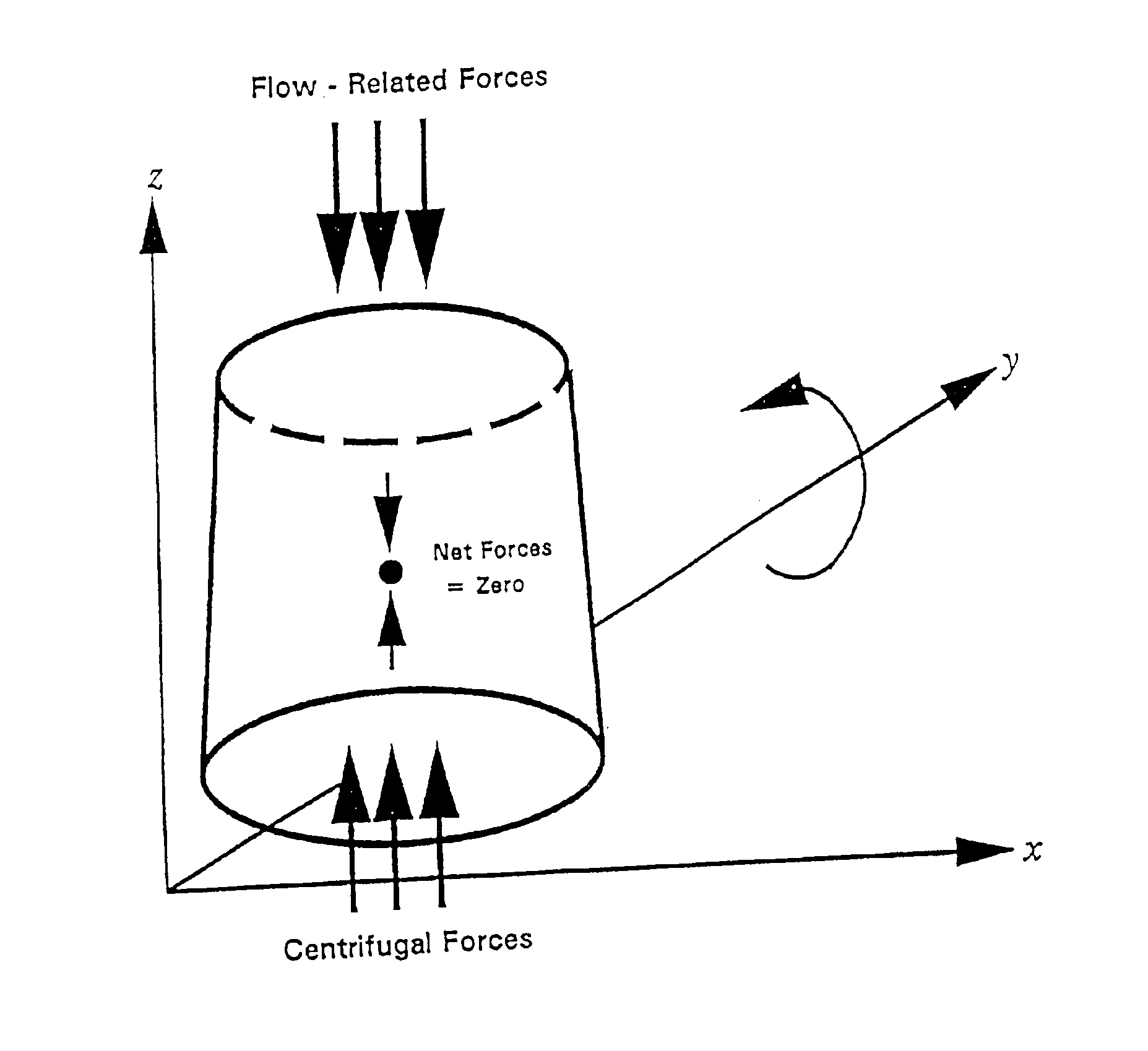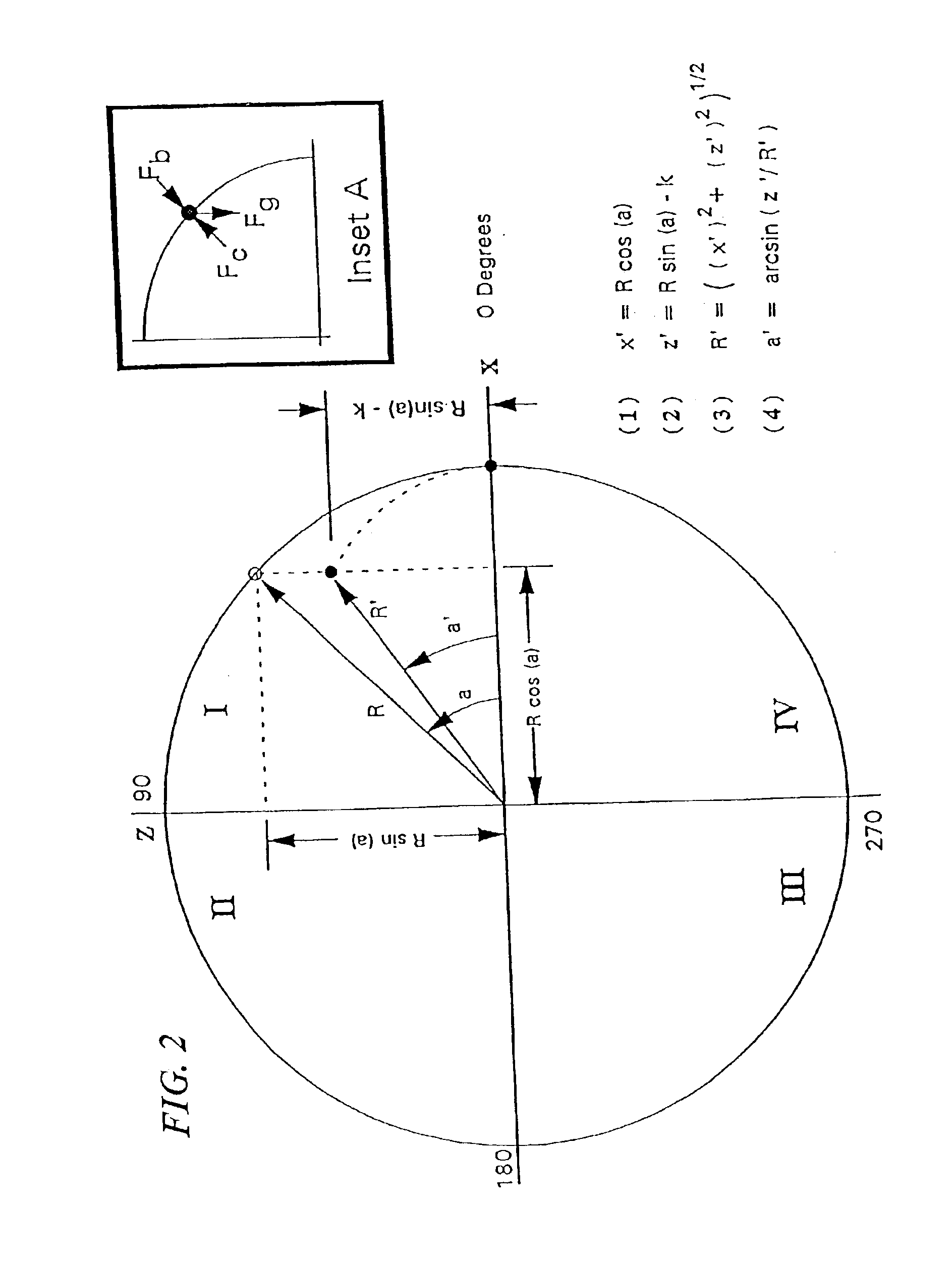Methods and compositions for chromatography
a chromatography and composition technology, applied in the field of chromatography and composition, can solve the problems of contaminated columns used for chromatography, slow process with less material isolated, and most methods and devices work insufficient ways, and achieve the effect of easy creation
- Summary
- Abstract
- Description
- Claims
- Application Information
AI Technical Summary
Benefits of technology
Problems solved by technology
Method used
Image
Examples
example 1
Formation of a Chromatography Bed
[0136]An analytical-scale CCD unit equipped with a Model 101096 transparent acrylic immobilization chamber (total volume=30 mL) was loaded with 2 mL of 30 μm diameter glass beads (Cat. No. GP0029, Whitehouse Scientific, UK. The CCD unit was turned on and a RPM of 350 and a flow of 50%-50% (v / v) glycerol−0.01 M sodium phosphate buffer (ph=7.0) was initiated. The physical appearance of the immobilization chamber and its contents could be continuously observed by means of stroboscopic illumination.
[0137]At flow rates below 5 mL / min, the glass beads formed a classical packed bed at the long-radius terminal portion of the chamber. As the flow rate was increased to 7 mL / min, the packed bed expanded to an estimated volume of 3 mL and became brighter by visual examination. Stepwise increases in liquid flow rate from 7-12 ml / min resulted in virtually immediate stepwise expansions of the bed volume and an increase in bed brightness. Similarly, stepwise flow ra...
example 2
Ion Exchange Chromatography
[0140]The ability of a bed of 30 μm glass beads immobilized in an analytical-scale CCD unit to exhibit ion-exchange chromatographic properties was assessed in the following manner. The CCD was operated at RPM=350 and a 7 mL / min flow of 50%-50% (v / v) glycerol—0.01 M sodium phosphate buffer (ph=7.0) was initiated after 2 mL of glass beads had been placed in the chamber. After bed formation had been demonstrated (flow rate increased to 10 mL / min; saw subsequent bed volume rise; decreased flow rate to 7 mL / min; saw bed volume lower) a 100 mL quantity of 1% trypan blue in 50%-50% (v / v) glycerol—0.01 M sodium phosphate buffer (ph=7.0) was pumped into the immobilization chamber. As this solution passed through the immobilization chamber, the clear, colorless beads took on a dark blue color. After about 15 min, the liquid flow into the CCD was replaced with 50%-50% (v / v) glycerol−0.01 M sodium phosphate buffer (ph=7.0) without the dye material. The glass bead arra...
PUM
| Property | Measurement | Unit |
|---|---|---|
| flow rate | aaaaa | aaaaa |
| v/v | aaaaa | aaaaa |
| pH | aaaaa | aaaaa |
Abstract
Description
Claims
Application Information
 Login to View More
Login to View More - R&D
- Intellectual Property
- Life Sciences
- Materials
- Tech Scout
- Unparalleled Data Quality
- Higher Quality Content
- 60% Fewer Hallucinations
Browse by: Latest US Patents, China's latest patents, Technical Efficacy Thesaurus, Application Domain, Technology Topic, Popular Technical Reports.
© 2025 PatSnap. All rights reserved.Legal|Privacy policy|Modern Slavery Act Transparency Statement|Sitemap|About US| Contact US: help@patsnap.com



